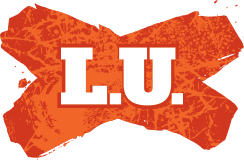It seems that the talking points by the politicians are to deflect questions re climate change back to the Greens with their alleged opposition to backburning. But is the Greens policy as outrageous as they are saying ?
https://greens.org.au/nsw/policies/bushfire-risk-management
Principles
The Greens NSW believe that:
1. Given the unique Australian ecosystem, that uncontrolled bush fires are a threat to life and property and to ecological sustainability. High intensity bush fires not only destroy property, but also destroy native fauna and flora and lead to increased soil erosion and siltation of streams;
2. Assumptions about bush fire prevention, mitigation, control and management need review in the light of the need for ecologically sustainable management;
3. Hazard reduction, including manual, mechanical and hazard reduction burning activities should be strategically planned to protect the community and vulnerable assets while minimising the adverse impacts of these activities on the environment;
4. Bush fire risk management should be informed by the knowledge of Indigenous Australians.
5. Strict controls are required to reduce the amount of rural burning that is not required for essential asset protection;
6. Prescribed burning is only one method of fuel management and should be considered in the context of other available options and the management objectives of the land in question;
7. Many vegetation communities and plants cannot survive frequent fire; for this reason frequent fire has been listed as a key threatening process by the NSW Scientific Committee under the Threatened Species Conservation Act;
8. Moreover, many vegetation communities can undergo severe decline in biodiversity with long-term fire exclusion. Ecologically appropriate fire regimes are required to maintain biodiversity and functioning ecosystems;
9. Firefighting services in NSW need support, supplementation and additional resources. In particular, local government needs to be provided with additional resources and finances to enable the proper implementation of its responsibilities with regard to the assessment and implementation of hazard reduction strategies;
10. Education of councils, land managers, land-holders, the general public, fire management planners and fire fighters is needed and should be publicly funded. Such education should target specific audiences and address a broad range of 'bush fire' and environmental issues;
11. Education and community awareness material needs to focus especially on the threat to the environment and to property of inappropriate use of fire, particularly burning that is too frequent, extensive in area, of excessive intensity, badly timed or carelessly implemented;
12. All firefighting agencies and land managers should be issued with guidelines as to the specific implications of the legal requirement for ecologically sustainable fire management and receive training on the environmental effects of bush fires;
13. Basic training courses for Fire Permit officers, Brigade Captains and Brigade members should include specific information on the environmental impacts of frequent burning, appropriate fire regimes for biodiversity protection in different vegetation communities, guidelines regarding the timing of burns, the manner in which burns are lit, maintained and contained, appropriate fire exclusion areas and buffer zones, and other requirements of the local Bush Fire Risk Management Plans;
14. Local Bush Fire Management Committees should prepare summaries of landholder obligations under risk management plans, including environmental assessment and protection requirements, for general circulation in the district;
15. High bush fire hazard areas are usually those associated with natural areas and vegetation. The location of residential or rural residential areas in high bush fire hazard areas increases the level of native vegetation loss as well as the level of threat to people and their homes. This is neither economically, socially nor ecologically sustainable. New development that requires the clearing of native vegetation on adjoining properties should not be permitted in identified Bushfire Prone Areas, where such development is likely to put lives or property in danger or involve substantial protection and suppression costs including loss of environmental values.
